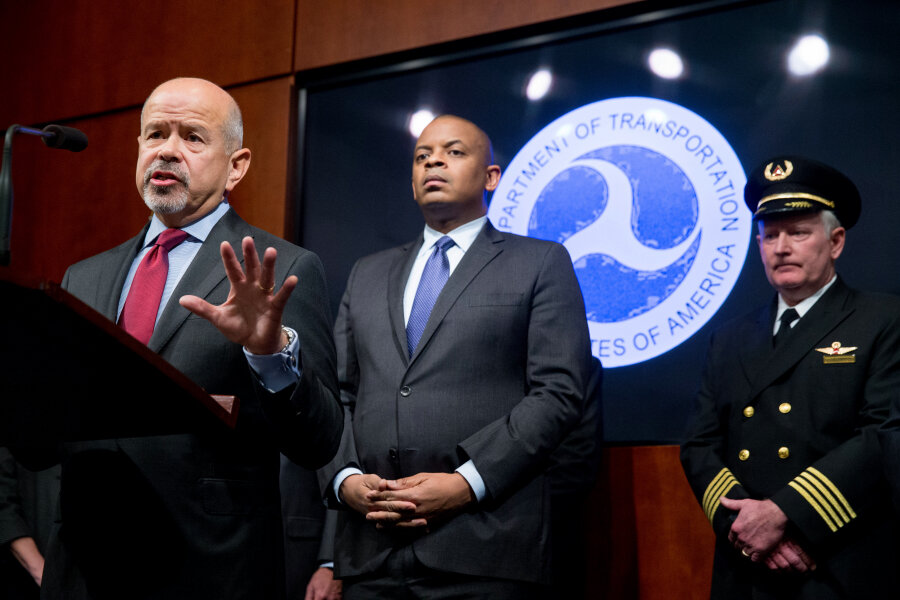Why the US will soon require registration for recreational drones
Loading...
On August 15, a small drone appeared alongside the left wing of a JetBlue flight as the pilot navigated the final approach into Los Angeles. It followed the plane for a few moments, then flew away. No one knew who was operating the drone, or what the outcome would be if it collided with the plane or got near the engines.
The white recreational drone wasn’t the first to interfere with a passenger airliner, but that didn’t make the encounter any less unsettling for those involved.
There haven’t yet been any reports of collisions between drones and aircraft, but the number of close calls is rising steeply, from about 30 encounters per month in 2014 to more than 100 per month in 2015 so far, according to the Federal Aviation Administration. On Monday, Transportation Secretary Anthony Foxx and other federal regulators announced the government’s response: all drone users, including hobbyists, will be required to register their drones in a central database.
The details of the registration process haven’t been worked out yet, but regulators hope that it will fulfill two goals once it’s implemented. First, the process of registration may help recreational drone fliers to take more seriously their responsibility to fly safely and to comply with existing drone rules. Second, the database may make it easier for officials to identify drones that are flouting the rules, and to hold their operators to account.
The FAA already prohibits recreational drones from flying higher than 400 feet, within five miles of an airport, or inside restricted airspace. But when a rogue drone appears near the White House or off the wing of an aircraft, identifying its operator is difficult since he or she may be quite far away.
Tracking drones is more difficult still, since most commercially available models are so small they don’t show up on radar. Registered drones will carry an identification number that pilots or officials may be able to identify – though that’s a long shot, since a rogue drone will probably be moving quickly through the sky.
A joint task force of industry representatives and officials from the FAA and the Transportation Department have until November 20 to come up with rules for the new registration system. The government aims to put the system in place before the holidays, when most new drones are purchased.
“The signal we’re sending today is that when you’re in the national airspace, it’s a very serious matter,” Secretary Foxx said at a press conference.






